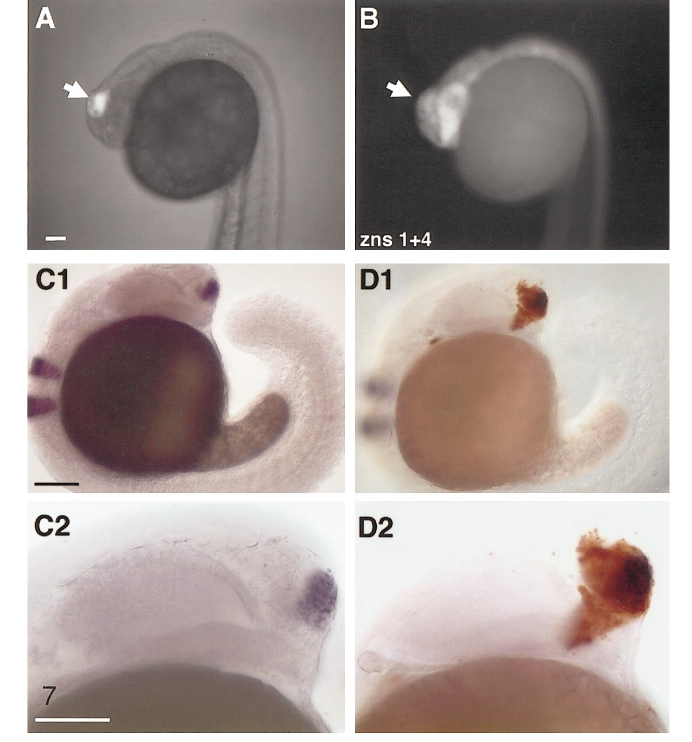Fig. 7 80H cells can maintain Krox20 expression even in nonnaive environment. (A and B) 80H cells grafted to the animal pole become lodged in the forebrain of the host (A, arrow). The graft is positive for neural markers zns-1 and zns-4 (B, arrow indicates graft). (C and D) In situ hybridization show that 80H graft is able to maintain Krox20 expression, and hence hindbrain identity, in presumptive forebrain territory of a 6-h host. These photos show the same embryo prior to (C1, magnified in C2) and subsequent to (D1, magnified in D2) biotin visualization of the graft, showing that Krox20 expression is entirely contained within the graft. All scale bars: 100 μm.
Reprinted from Developmental Biology, 197, Woo, K. and Fraser, S.E., Specification of the hindbrain fate in the zebrafish, 283-296, Copyright (1998) with permission from Elsevier. Full text @ Dev. Biol.

